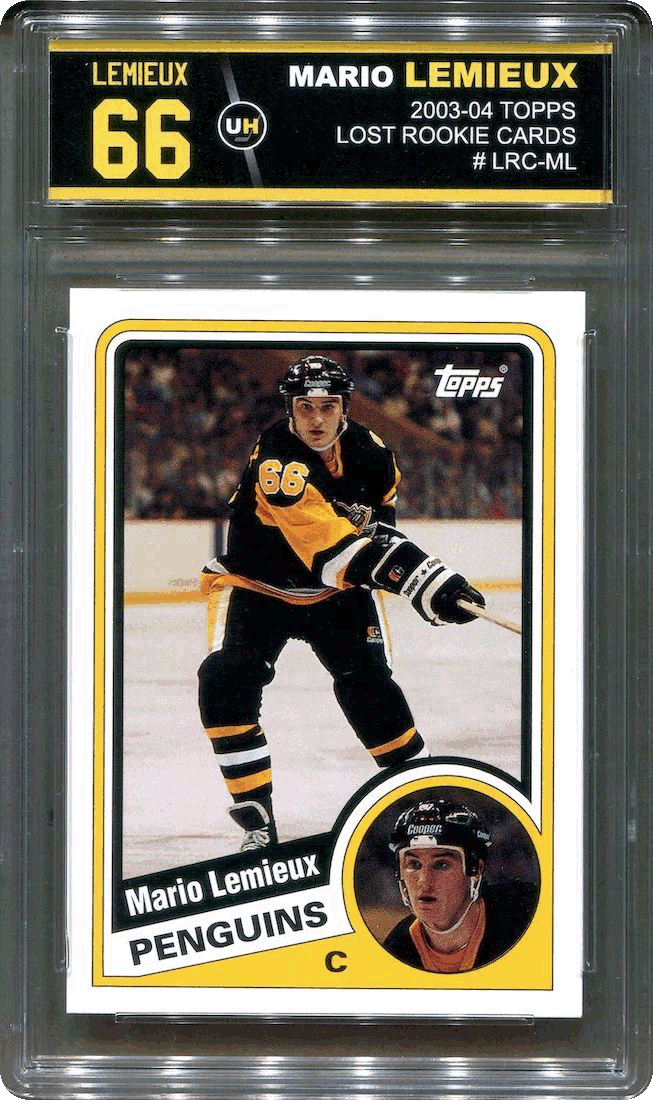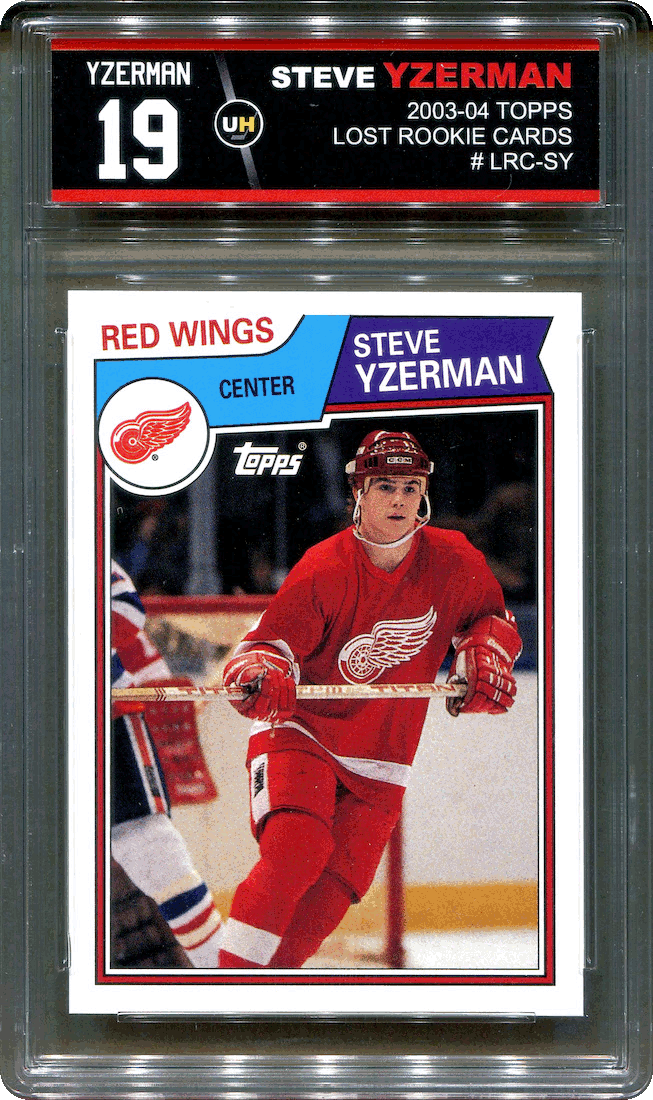
Over the years, my approach to storing and displaying my hockey card collection has evolved significantly. As a kid during the 1980s, my cards were kept in rubber-banded stacks inside a shoebox. (You can thank me and every other kid for those cards having any value today!) During the 1990s, as storage products became more readily available and I had enough money to buy them, I started moving my complete sets into nine-pocket pages and binders. Eventually, I went one step further, moving my high-value singles from binder pages into 1/4" screw-downs.
At the time, screw-downs offered the best protection possible, especially for cards I wanted to display on a desk or a shelf where they might get accidentally bumped into or knocked over. I chose recessed screw-downs so the cards would be centered properly inside the holder and so I felt comfortable tightening the screws without damaging the cards.
Twenty cards in all - the core of my collection - lived safely inside those screw-downs for about twenty-five years, including my Bobby Orr RC pictured below. Then, in February of 2020, I decided to submit four of those cards to PSA for grading.

My plan was to eventually get all twenty cards graded. I wanted to make sure that if I ever sold any, I could do so easily (by avoiding any arguments over authenticity or condition) and for true market value. That, to me, is the only reason to ever get cards graded.
Not long after getting that first submission back, I realized just how much I liked PSA slabs for displaying my cards. There was something very official about each card receiving an assigned grade and a serial number from a third-party authentication company, and having that information presented on the label added a certain amount of weight or validity to the card itself. Shown below is the same Bobby Orr RC in its PSA slab.

But beyond the information it provided, I especially liked the label from a visual perspective. Even the PSA label, which can be described as functional at best, added to the overall presentation of the card. I immediately saw the potential for a label that could better compliment each individual card. I started to think about other cards in my collection - lower-value cards I would never submit for grading - and how great they would look in similar slabs.
Slabs and Labels
My plan to grade only the twenty high-value cards in my collection never changed. Grading is expensive, and I was not about to submit lower-value cards just to get nice display cases for them. It was the slab itself I was interested in.
I wondered if I could buy empty slabs and add cards to them myself. I knew I could probably design a label that would be good enough for my own cards, especially if the design could be somewhat tailored for each card. Without the need for grading, the slabs would just be a nicer alternative to top-loaders or one-touches for protection, storage, and display. I just needed to find slabs.
One of the first products I came across was Vanity Slabs. These were exactly what I was looking for. They were the same style and size as PSA, which was convenient. Since my only graded cards were from PSA, it meant I could use the same fitted sleeves for both, and I could keep both kinds of slabs in the same storage box. They were also self-closing, which meant they would not be permanently sealed in away way, allowing me to swap out cards at any time.
The downside was cost. A five pack of Vanity Slabs was ridiculously expensive at $100 CDN. But the only alternative was to order slabs in bulk from an overseas supplier, which would have cost a minimum of $400 CDN. I decided to order the Vanity Slabs. Despite the cost I was interested enough to see how I could use the slabs, and I was curious to see if they would close securely.
While waiting for my Vanity Slabs order to arrive, I got to work designing a label. I decided the easiest way to match a label to a specific card was through colour matching. For consistency, I decided to use black as the primary colour for every label. A secondary colour could be used for the label borders, which could be matched to each card. I also decided to include the player's name and number as it would appear on the back of their jersey, which could also be colour-matched to each card. Overall, this was a very basic design, but it worked.

I ended up liking these custom slabs so much that I went ahead and made a bulk order of slabs from overseas. To help offset the cost, I began taking orders for custom slabs and labels from fellow collectors. While that was a great experience, I ultimately had to stop as it took up a great deal of time.

With a supply of slabs and a label design I was happy with, the fun part was trying to figure out how to use these custom slabs for my collection. Here's how I decided to use them.
Low-Grade Vintage
Some of the first labels I made were for my favourite vintage cards. Most of the cards pictured below are low-grade doubles of my graded cards.
Favourite Set
Many hockey collectors would include 1971-72 O-Pee-Chee among their favourite sets, myself included. You can learn why in my article, Best. Design. Ever.
Favourite Insert Set
2003-04 Topps Lost Rookie Cards is one of my favourite insert sets. It presents the ultimate what-if scenario for collectors of 1980s rookie cards. You can read more in my article, Lost Rookie Cards.
Favourite Player
I have been a Jaromir Jagr fan since I was 15. I kept current with the hobby for many years by collecting select Jagr base cards. Who knew I would still be doing that until 2017!
Low-Value Cards
Base cards from the 1990s are perfect candidates for a custom slabs. The 1992-93 Topps Wayne Gretzky card shown below is worth about $1, but it is one of my favourite Gretzky cards. It comes from what I consider to be a very underrated 1992-93 Topps set (see my post OPC's Missing Link to learn why), and features a nice photo of Gretzky combined with a great card design.
These custom slabs have become a big part of my collection. I currently have about 80 cards in them, which is far more than the number of graded cards I own. To me, they are the best option for displaying raw cards.
For the latest custom slabs in my collection, you can follow me on Instagram.
Happy Collecting!
#





























